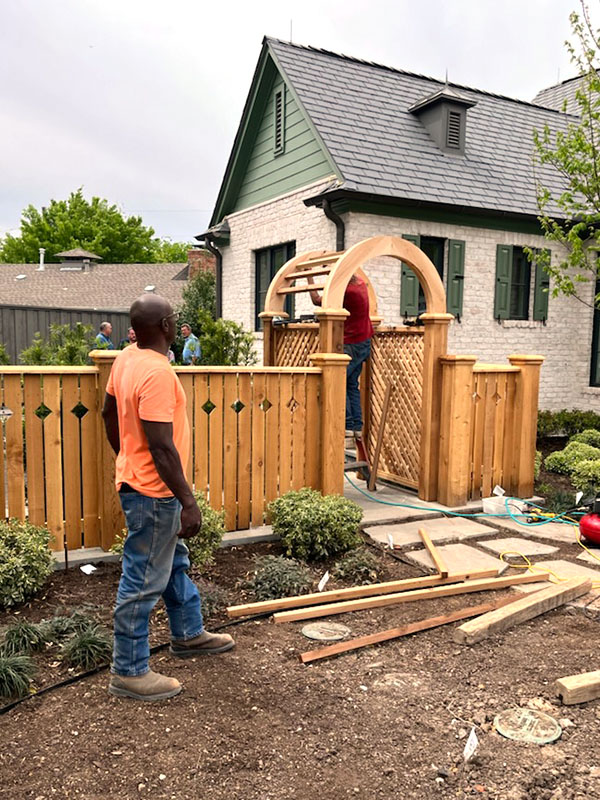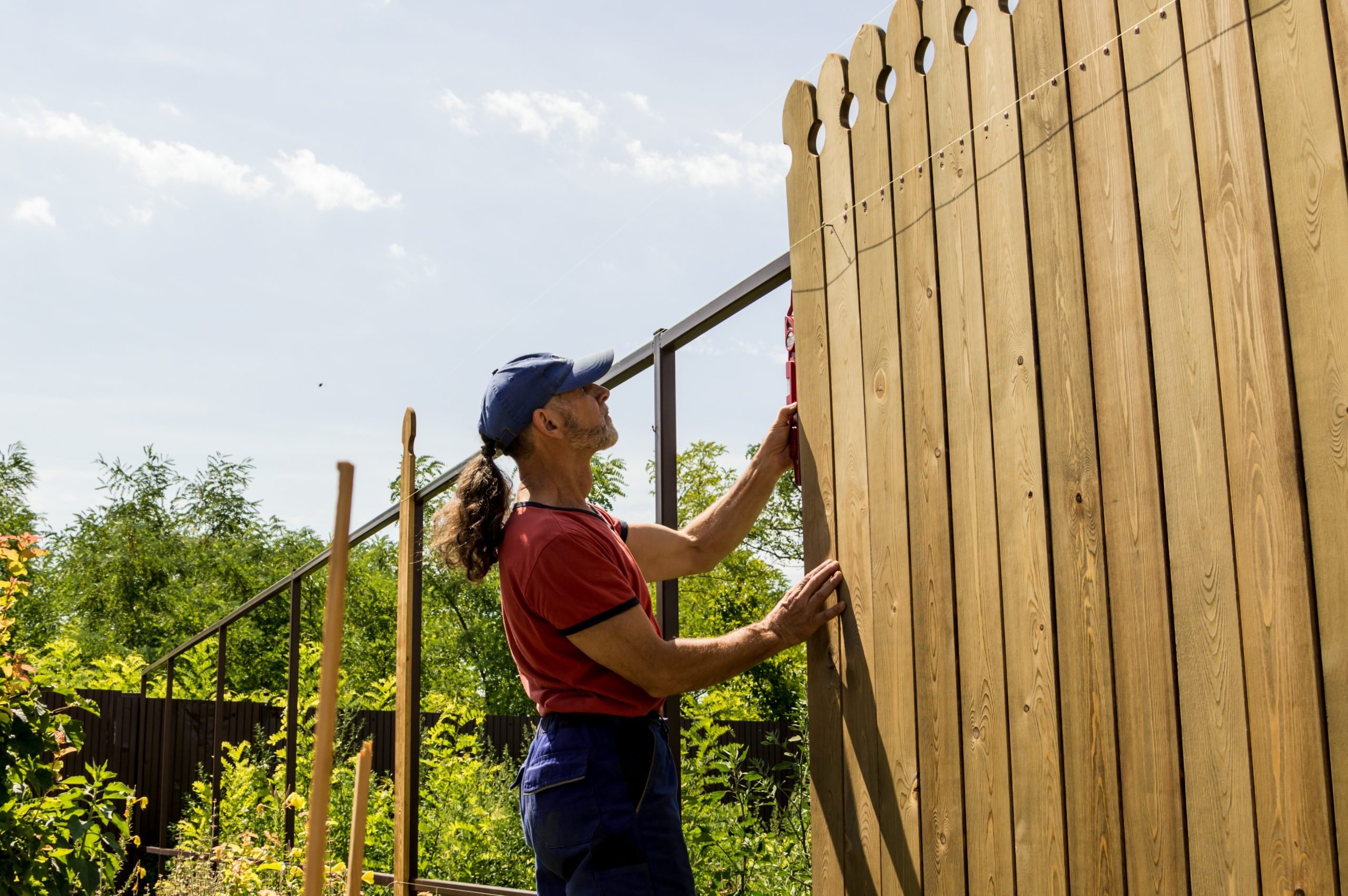Testimonials That Help You Find the Best Fence Contractor Near Me
Testimonials That Help You Find the Best Fence Contractor Near Me
Blog Article
Just How to Identify Usual Problems That Call For Immediate Fencing Repair Work
It is important to detect concerns before they become larger problems when it comes to keeping your fence. Regularly looking for signs of decaying timber, leaning panels, or rust can conserve you time and money in the future. You may not recognize exactly how weather condition and bugs can endanger your fencing's stability. Let's discover the typical signs that suggest your fencing needs prompt attention, so you can keep your residential property safe and secure and looking its ideal.
Indicators of Rotting Timber in Wooden Fences
Have you seen your wood fencing looking a bit shabby? It may be time to inspect for signs of decaying wood if so. Check out the base of the posts and panels for soft places. If you continue the timber and it really feels mushy or falls apart, that's a clear sign of rot. Next off, look for discoloration or dark areas on the timber-- these frequently signal wetness damage. Take note of any type of peeling paint or coating, as this can reveal the wood to more degeneration. In addition, a poignant, musty scent can suggest fungal development. Do not forget to check links and joints; if they're loosened or crumbling, the wood beneath is most likely endangered. By catching these indications early, you can prevent a lot more substantial damage and keep your fence standing strong. Regular maintenance is essential to expanding the life of your wood fence.
Leaning or Tilting Fence Panels
If you have actually seen your fence panels turning or leaning, it's crucial to recognize what triggered it. This issue could show underlying structural damages that needs your attention. Allow's discover the common causes and the repair choices offered to get your fence back in shape.

Root Causes Of Leaning Panels
When you see your fencing panels turning or leaning, it's frequently a sign of underlying issues that need dealing with. One common cause is inadequate drainage; too much water can deteriorate the soil around the fencing articles, weakening their support. Another wrongdoer might be strong winds or storms that push against the panels, specifically if they're not properly secured. In addition, the natural settling of dirt gradually can create messages to change, resulting in a tilt. Pests, like termites, can jeopardize the honesty of wood panels, creating them to lean. Poor installment practices may result in panels not being safely established, leaving them susceptible to leaning under stress. Address these issues promptly to maintain your fence's integrity.
Indications of Architectural Damage
Discovering leaning or turning fencing panels can be alarming, as these problems frequently show structural damages that needs immediate focus. When your fencing begins to lean, it may indicate that the messages are shifting or that the soil around them has worn down. Pay very close attention to voids in between panels or articles, as these can also suggest instability. deck builder. In addition, look for splits or splintering in the timber, which can damage the overall framework. If you notice rust or rust on steel parts, it can compromise the stability of the fence. Remember, neglecting these signs can cause a lot more serious damage down the line, so it's necessary to assess the circumstance immediately and act prior to it intensifies
Repair Options Available

Corrosion and Rust in Steel Fences
If you own a metal fencing, you may discover corrosion and corrosion slipping in over time, particularly if it's subjected to dampness. These concerns not only affect the appearance of your fence yet can also endanger its structural honesty. To determine corrosion, search for reddish-brown areas or patches, which suggest the metal is oxidizing. Corrosion can spread rapidly if left unattended, compromising the fencing and leading to expensive repairs.To tackle corrosion and deterioration, you must clean the influenced locations with a cord brush and use a rust-inhibiting guide. When the primer dries out, take into consideration repainting the fence with a weather-resistant paint to secure it better. Routine upkeep, such as checking for indications of corrosion and touching up paint as needed, will certainly help prolong your fencing's lifespan. Dealing with these concerns promptly ensures click to investigate your metal fence stays solid and visually appealing for years ahead.
Fractures and Divides in Vinyl Fence

Sources Of Vinyl Damage
Plastic fencing is preferred for its durability, yet it can still deal with splits and splits due to numerous variables. One significant reason is severe temperature variations. It can deteriorate the material over time when plastic broadens in the heat and contracts in the cool. In addition, exposure to extreme sunshine can cause UV degradation, making the vinyl brittle. Physical impacts, like unexpected collisions or hefty branches, can likewise produce cracks. Poor installation or using low-grade products can exacerbate these issues. Age plays a role; older plastic fence is more vulnerable to damages. Regular inspections can assist you determine these aspects prior to they result in considerable problems. Take positive measures to assure your fencing continues to be solid and undamaged.
Fixing Cracks Successfully
Splits and splits in your vinyl fencing can be worrying, resolving them without delay can prevent more damages and preserve the fencing's look. Evaluate the size of the crack. For little fractures, a plastic fixing kit frequently consists of sticky that can bond the sides, offering a smooth repair. Clean the area thoroughly prior to using the glue, ensuring it adheres correctly. For larger splits, you might require to utilize a vinyl spot. Cut the spot to size, apply sticky around the edges, and press it strongly onto the split. Enable it to treat as per the manufacturer's directions. Regular maintenance and fast repair services can prolong your fencing's lifespan, keeping it looking wonderful for several years to come.
Loosened or Missing Out On Fence Blog Posts
Loose or missing fence articles can threaten the stability of your whole fence framework. If you see any type of articles wobbling or leaning, it's necessary to resolve the problem right away. Examine for any type of indicators of motion, as this can result in further damages with time. You can quickly evaluate the problem by providing each message a gentle shake-- if it really feels unsteady, it's time to take action.For missing blog posts, you'll need to change them asap to preserve your fencing's stability. When you set up new blog posts, see to it they're securely anchored in the ground with concrete or crushed rock for added stability. If a post is loosened, tighten it by including additional support or driving it deeper into the ground.Ignoring these problems can cause bigger troubles, like gaps in your fencing or perhaps total collapse. Keep an eye on your articles and stay proactive about repairs!
Damages From Weather and Natural Environment
Weather condition and all-natural aspects can ruin your fence, causing different types of damage that call for timely interest. Hefty rainfall can create timber to rot, making it weak and unstable. Snow build-up could flex or break panels, while solid winds can root out fence posts or trigger try these out sections to lean.If you see fractures or splintering in wooden fences, it suggests drying out as a result of intense sunlight direct exposure. At the same time, metal fences can corrosion if safety coverings use off, specifically in coastal or damp areas.Inspect your fence routinely after storms or extreme weather to catch any kind of damages early. Dealing with these issues rapidly can save you from pricey fixings down the line. Do not wait until a tiny trouble becomes a significant one; remain proactive and maintain your surround leading shape to preserve both capability and visual charm.
Insect Invasion and Termite Damages
When you see indications of insect infestation or termite damage, it's essential to act rapidly to stop further devastation. Seek mud tubes along your fence or hollow-sounding wood, as these suggest termites are at job. You might additionally see tiny openings or frass, which is termite droppings go to my blog looking like sawdust. If you identify any of these indicators, it's time to evaluate the damage.Don' t wait up until it's as well late; pests can endanger your fence's stability. Inspect the surrounding area for beetles or ants, as they may be adding to the trouble. If you think an invasion, think about calling a pest control professional to confirm and treat the issue.Repairing or replacing affected sections of your fencing immediately not just restores its toughness but also stops bugs from spreading additionally. Keep cautious to keep your residential property pest-free and safe and secure.
Often Asked Questions
How Frequently Should I Examine My Fence for Damages?
You must examine your fencing at the very least twice a year, ideally throughout spring and fall. Routine checks help you find damages early, saving you money and time on fixings while preserving your home's appearance and safety and security.
Can I Fix a Fence Myself or Work With a Professional?
If you have the right tools and abilities, you can certainly repair a fence on your own. Employing a professional warranties high quality job and saves you time, specifically for intricate repair services or comprehensive damages.
What Equipment Are Needed for Standard Fence Repair Work?
For basic fencing repair services, you'll need devices like a hammer, screwdriver, pliers, a saw, a degree, and gauging tape. deck builder. Depending on the fixing, you might also need nails, screws, or replacement boards
Exactly How Much Does Fence Repair Normally Cost?
Fencing repair service costs vary commonly, yet you can anticipate to pay between $200 and $1,500 relying on products, labor, and level of damage. It's clever to get multiple quotes for the very best deal.
When Is the Ideal Season for Fencing Repairs?
The best time for fence repairs is during mild climate, typically in spring or very early loss. You'll prevent severe temperatures, making it less complicated to function and making certain the materials established effectively for lasting longevity (deck builder). Noticing leaning or turning fence panels can be alarming, as these issues frequently indicate architectural damage that needs prompt focus. Missing or loosened fence posts can weaken the security of your entire fence framework. Snow buildup may flex or damage panels, while strong winds can uproot fencing posts or cause sections to lean.If you discover cracks or splintering in wood fencings, it's a sign of drying out due to intense sunlight direct exposure. Steel fencings can rust if safety coverings put on off, specifically in coastal or moist areas.Inspect your fencing frequently after storms or severe weather to capture any damage early. Fencing repair prices differ extensively, yet you can anticipate to pay between $200 and $1,500 depending on materials, labor, and extent of damage
Report this page